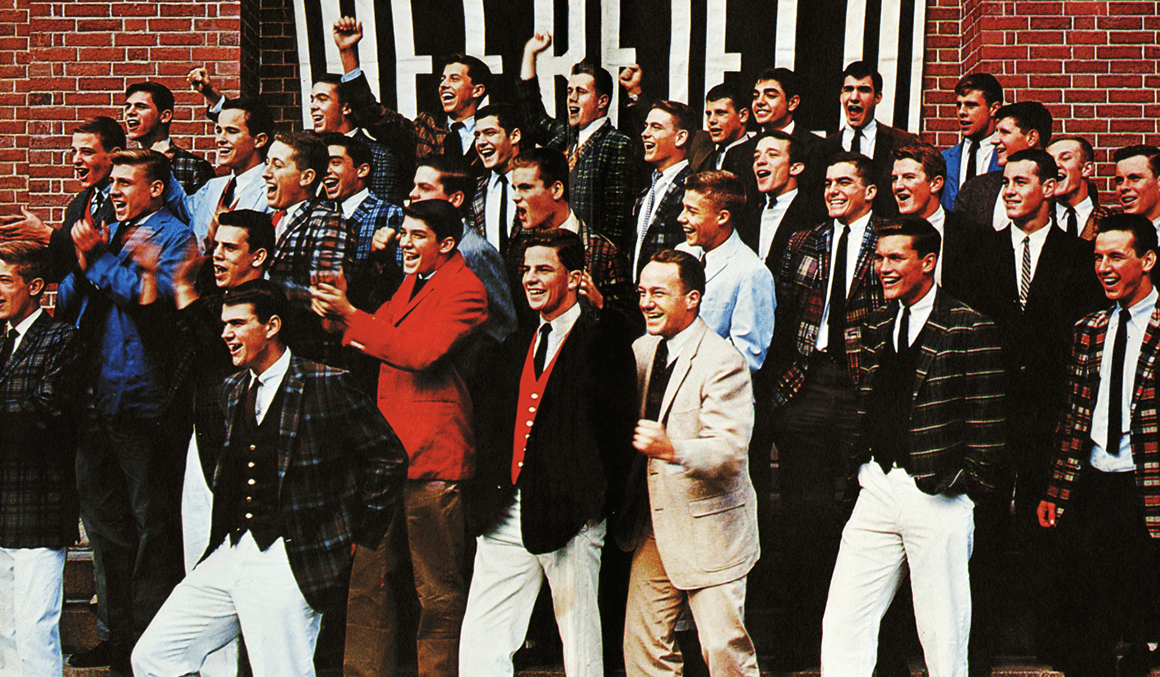A Gentleman’s Guide To The Sports Jacket
Now that plus-fours have been dumped in the sartorial dustbin of history, does any phrase in the dictionary of dressing up come so loaded with class connotations as “sports jacket”? It speaks of middle-age, convertible-driving men in pink shirts drinking pink gin after a round at their members-only golf club. And the backstory of the sports jacket certainly prefigures this: it’s said to be the evolution of the tailored style popularised by the Duke of Norfolk in the 1860s, worn for sport (which back then meant hunting).
The Norfolk jacket, as it would come to be better known, was high buttoning and multi-box pleated (two at the front, one at the back), belted, and featured large, flapped pockets. All of these details made it practical and easy to move in, or kept it tucked out of the wearer’s way, all the better for achieving the perfect shot (with a 12-bore rather than a nine iron). Typically made of a heavyweight fabric such as tweed, this was a serious piece of outerwear.
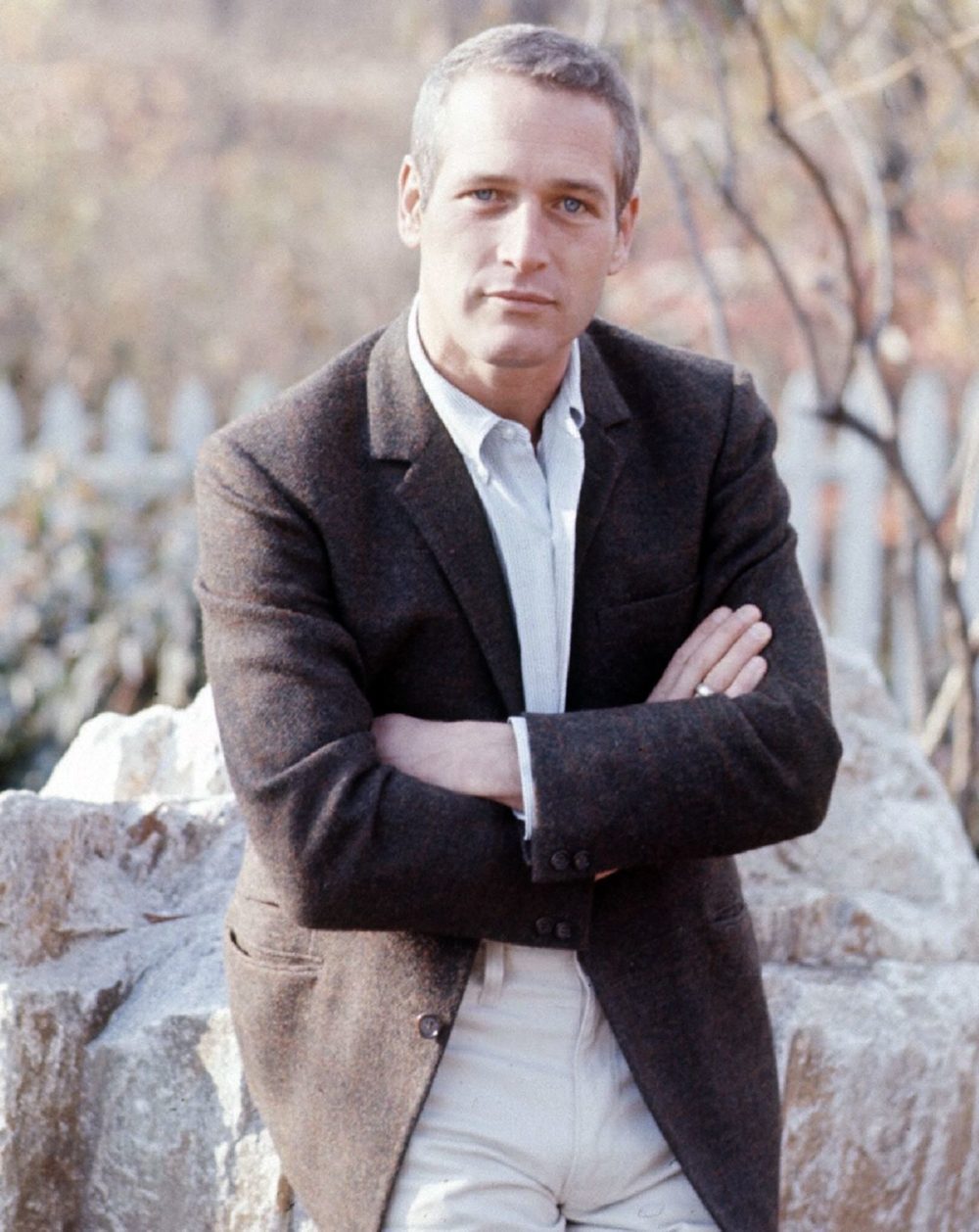
Paul Newman, 1967; ivy style brown tweed sports jacket, grey university-striped button-down shirt, tan whipcord 5-pocket trousers
As with most things royal back then, it would influence the way those lower down the pecking order dressed, too. With the more functional details slowly phased out, what remained was the kind of jacket that could be worn less for bloody country pursuits and more spectating at sporting events; this at a time when even watching came with a dress code. In others words, the sports jacket was the progenitor of the more simple tweed jacket – useful when outdoors, still tailored, but more typically associated with city life.
Inevitably, the tweedy kind of jacket softened to make the most of the idea of wearing a jacket without having to don a full suit – allowing its wearer retain a suggestion of smartness in a casual setting. And that remains its function today: to take an essentially comfortable outfit and finish it with the suggestion of proprietary afforded by a piece of tailoring. This type of jacket will frame your face, allowing you to wear a tie with your shirt if required – or not (a sports jacket looks good with an open-neck shirt in the way that a suit blazer never does) – but isn’t so smart as to make you feel overdressed either.
It’s a relatively new idea, but this was the garment that made historically “casual” clothes – a clean pair of jeans, even a plain T-shirt – workable in a dressier context. Just add a sports jacket and suddenly you’re looking more professional, more grown up, more respectable.
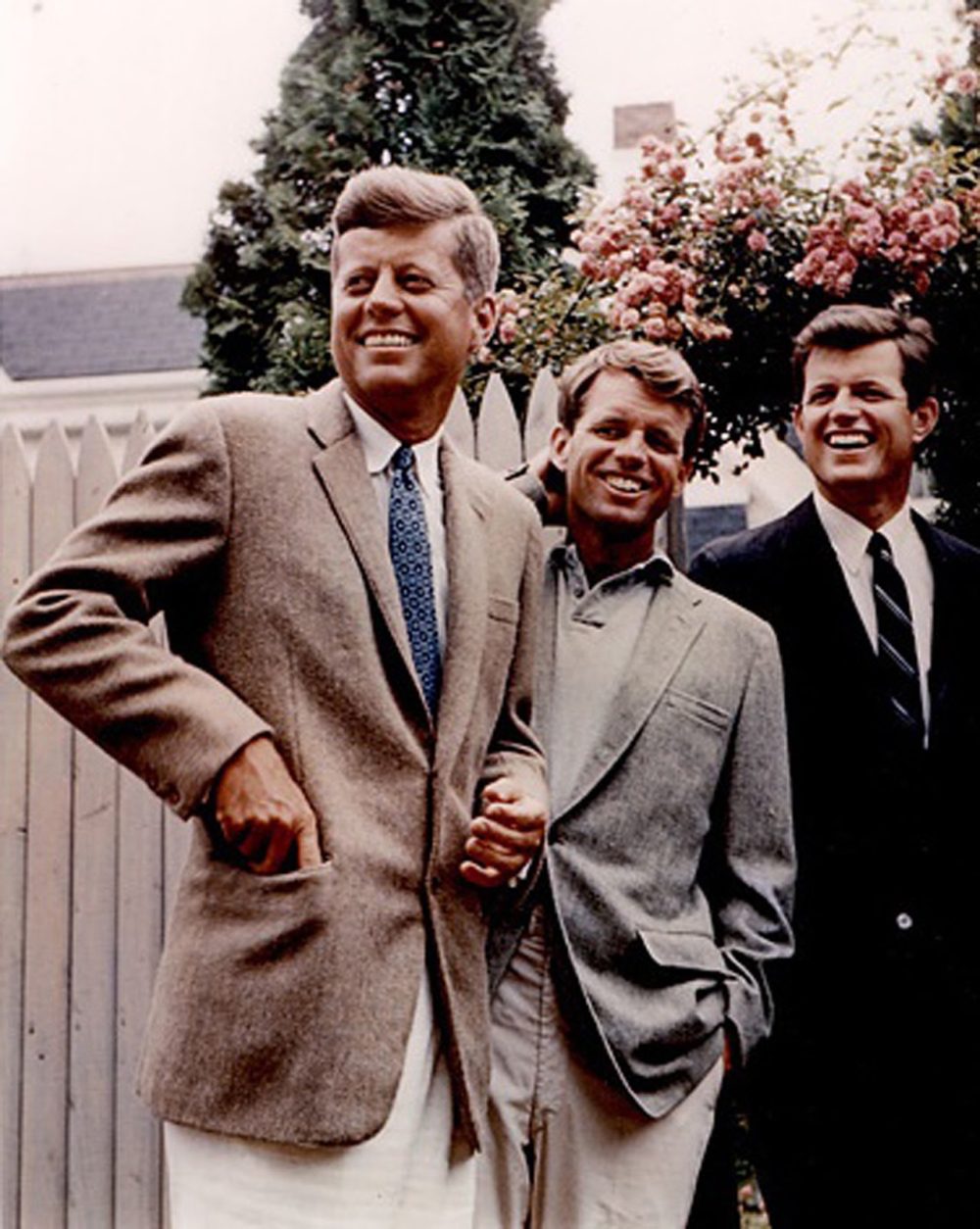
JFK and RFK smartening up the sports jacket with a tie
It’s a concept that, over more recent years, has really taken hold in parallel with the rise of business casual dress codes and the suit losing its grip on received ideas of what it is to be dressed up. Menswear has, in effect, embraced a traditionally womenswear-oriented idea: separates. This is, in short, the notion that your top half and your bottom half need not match (unlike a suit) to still appear smart and presentable. Trousers worn with a sports jacket – in complementary colours and fabrics, but not the same ones – makes for a more creative, expressive and somehow contemporary way of looking the part.
Given that the heavyweight nature of the traditional sports jacket works for winter but not so well in modern, centrally-heated buildings, invariably it now comes in lighter weight wools and thicker cottons. It looks, to all intents and purposes, like you’ve forgotten to put on the bottom half of your suit. Indeed, that’s the danger in today’s sports jacket, and why classic suiting patterns – pinstripes, birdseye and the like – are best avoided. It’s also why the sports jacket tends to celebrate those details rarely found on “proper” suits: patch pockets, for example, or maybe a lack of vents.
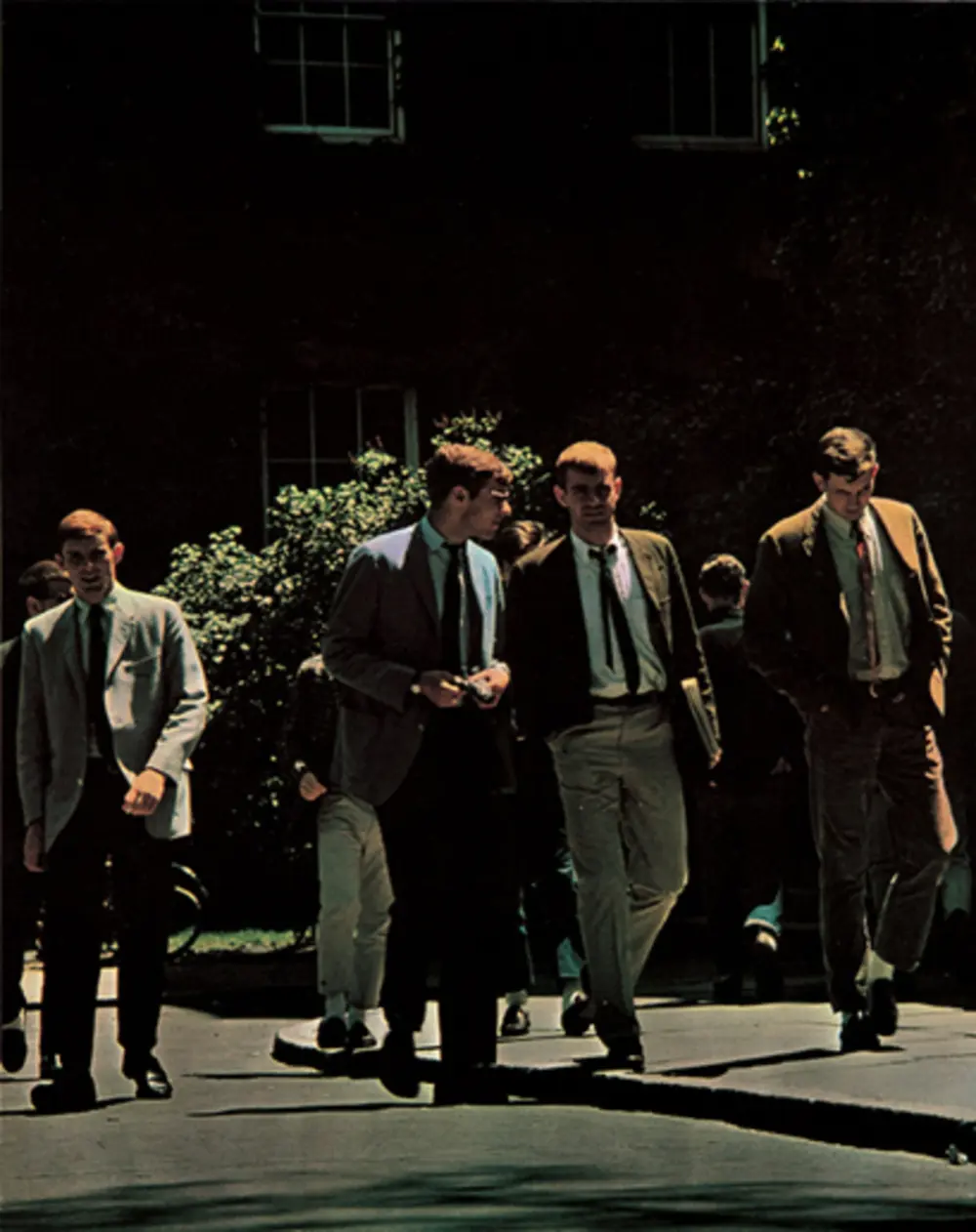
Ivy League university students were and are well versed in the benefits of the sports jacket – shown here in an extract from the 1965 book Take Ivy
It’s for the same reason that brass buttons work – because you wouldn’t find these on a suit – or a pocket with a crest emblazoned on it. It’s also why a blazer works in the same context as the sports jacket; it has a similarly uppercrust English back story as well. Depending on which version of history you believe, it was either named after the short red jackets worn in the early 19th century by the rowing crews of St. John’s College, Cambridge (unless you work for Butlin’s, don’t ever wear a red blazer, by the way) or has evolved from the jackets the captain of one HMS Blazer had made for crew (back before there was an official Royal Navy uniform) ahead of an inspection from Queen Victoria.
These days, much as the sports jacket has escaped its stuffy connotations, so the blazer is moving beyond its 1960s and 1970s incarnation as the choice of Roger Moore-era James Bond; and the idea that it’s a garment only worn by men of a certain age and political persuasion. The classic form still retains many old-school tailoring details: a nipped waist, rope shoulder, a longer line and, crucially for any blazer, contrast buttons (though not necessarily gold ones). As mentioned, these, ultimately, are what distinguishes it from any other jacket. But now it might be more fitted or slightly cropped – making it more obviously of the present than of a time when a blazer came with fawn and slightly flared “slacks”.
Whether to opt for a single- or double-breasted sports jacket is a matter of taste, style and physique. Single-breasted is easier; double-breasted more striking but harder to pull off. The latter can leave you looking supremely elegant – think Noel Coward at cocktail hour – but it can also leave you looking like you’re about to pipe a dignitary on board.
The Best Sports Jacket Brands
Brooks Brothers – for classic American preppy style
The quintessential American preppy brand, Brooks Brothers – with its 200 year and counting heritage – is no stranger to the world of sports jackets (or “sports coats”, as they are known across the pond).
Prices start from £360 and reach up to £1,680, but we find the mid-range options hit the sweet spot: quality fabrics and construction, classic styling, and value for money at around the £650 mark.
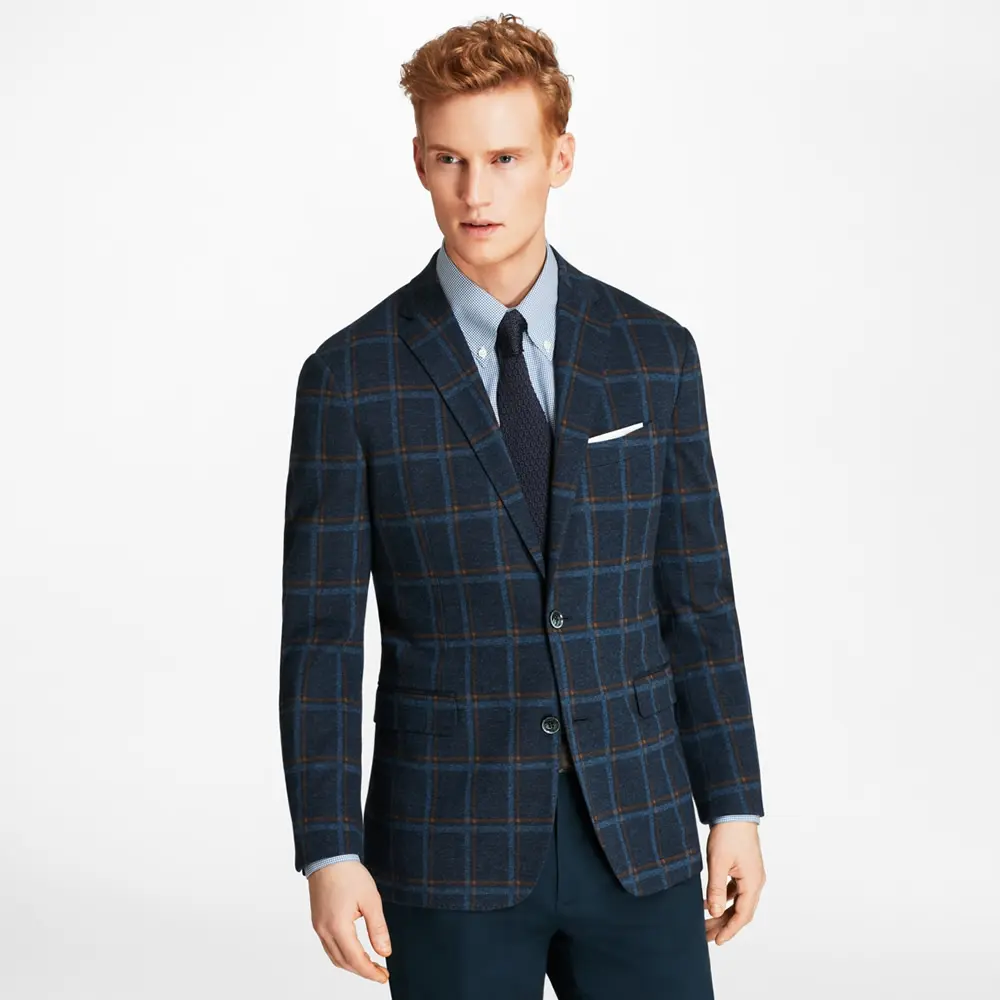
Milano Fit Windowpane Knit Sport Coat, £650 >
Boglioli – for traditional Italian tailoring
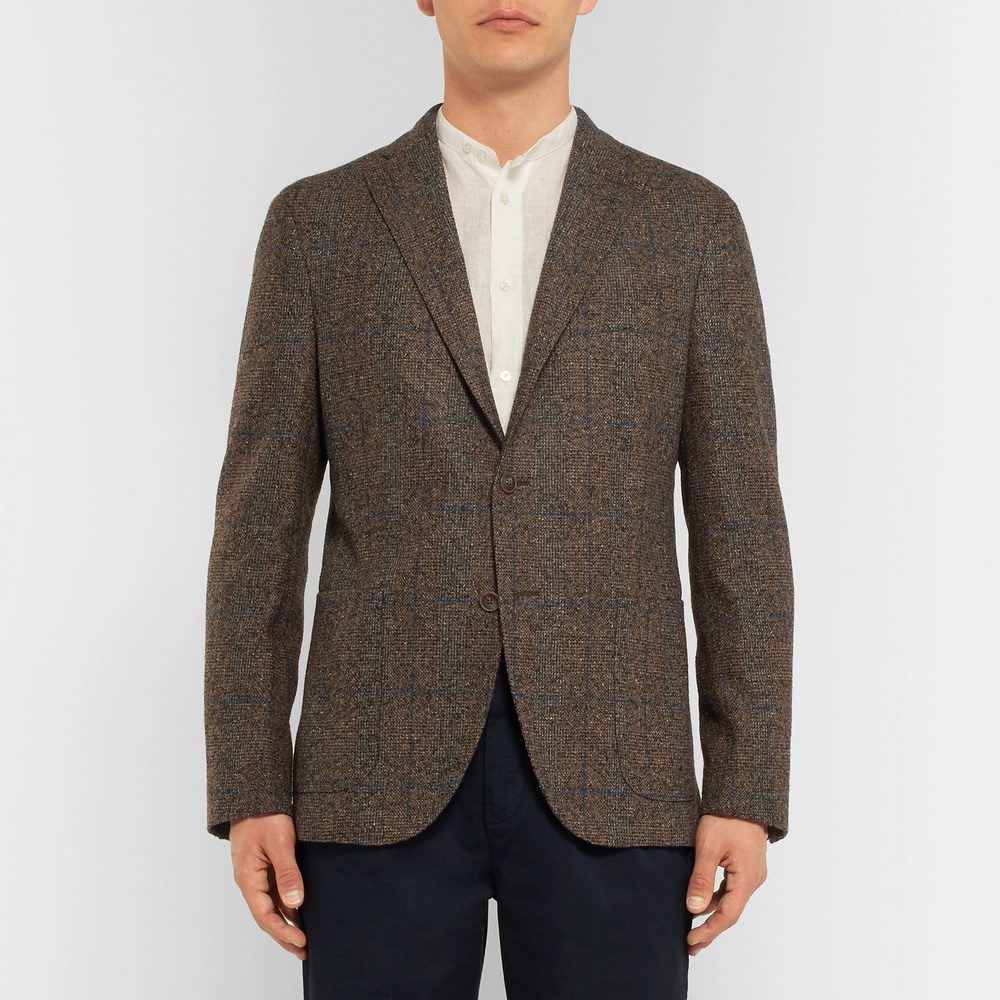
Brown Unstructured Checked Woven Blazer, £585 >
For a Mediterranean take on the sports jacket, look no further than Boglioli. Based out of Brescia, Italy the brand boasts four generations of tailoring expertise, with traditional manufacturing methods and meticulous standards ensuring a superior quality product.
The brand is renowned for its lightweight fabrics, clean cuts and unstructured silhouettes, making them a go-to for relaxed, warm-weather sports jackets – the type that you find on the Riviera.
Drake’s – for a relaxed yet sophisticated vibe
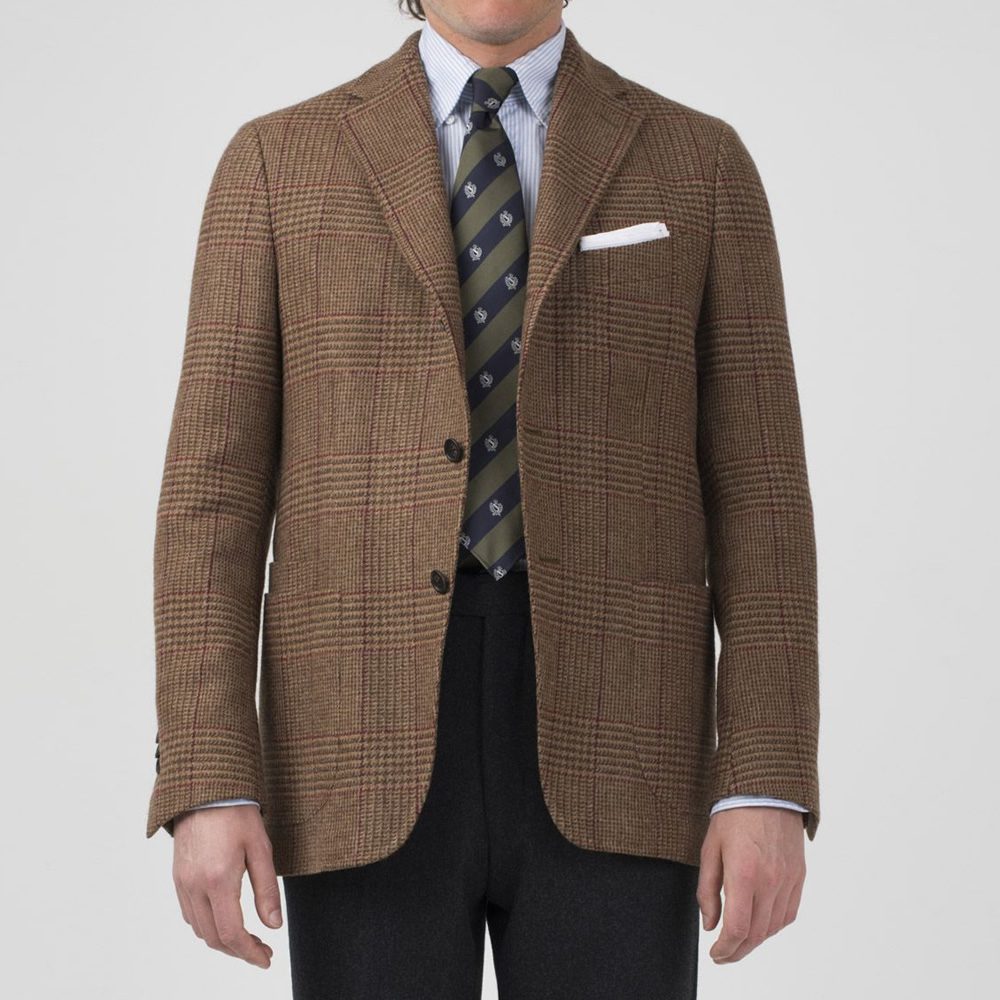
Brown Prince of Wales Wool Jacket, £795 >
Drake’s is going through somewhat of a purple patch right now, and for good reason. The acclaimed British brand was founded over 40 years ago in 1977 and epitomises the “relaxed elegance” a sports jacket personifies.
Expect to find unique colourways and patterns, for something a little different – perfect when you want to make an impression. Drake’s products are made at its own factories in London and Somerset, adhering to a strict quality control process.
Etro – for classic styling with Italian flair
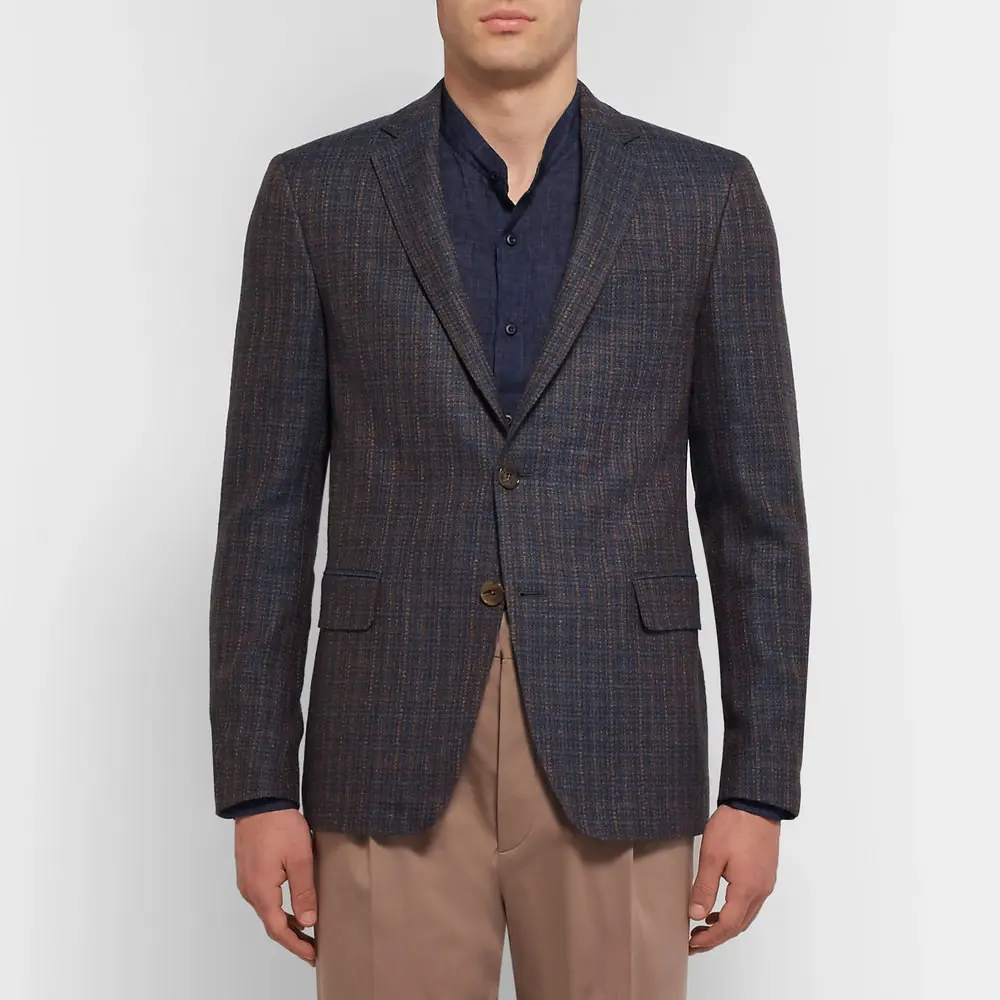
Navy Slim-Fit Checked Wool, Cotton And Cashmere-Blend Blazer, £960 >
Apart from perhaps Missoni, no-one quite epitomises “Italian flair” like Etro. With over 40 years’ of heritage under its belt, the family-run company produces stylish, elegant and premium quality menswear.
Its collections are designed by the founder’s son, Kean Etro, who not only ensures the highest levels of craftsmanship but has Etro’s DNA of designing clothing with vibrant prints and colour running through his blood. His real skill is weaving in this flair in an understated way, so as not to stray into the realms of peacocking.
Suitsupply – for modern cuts and value for money
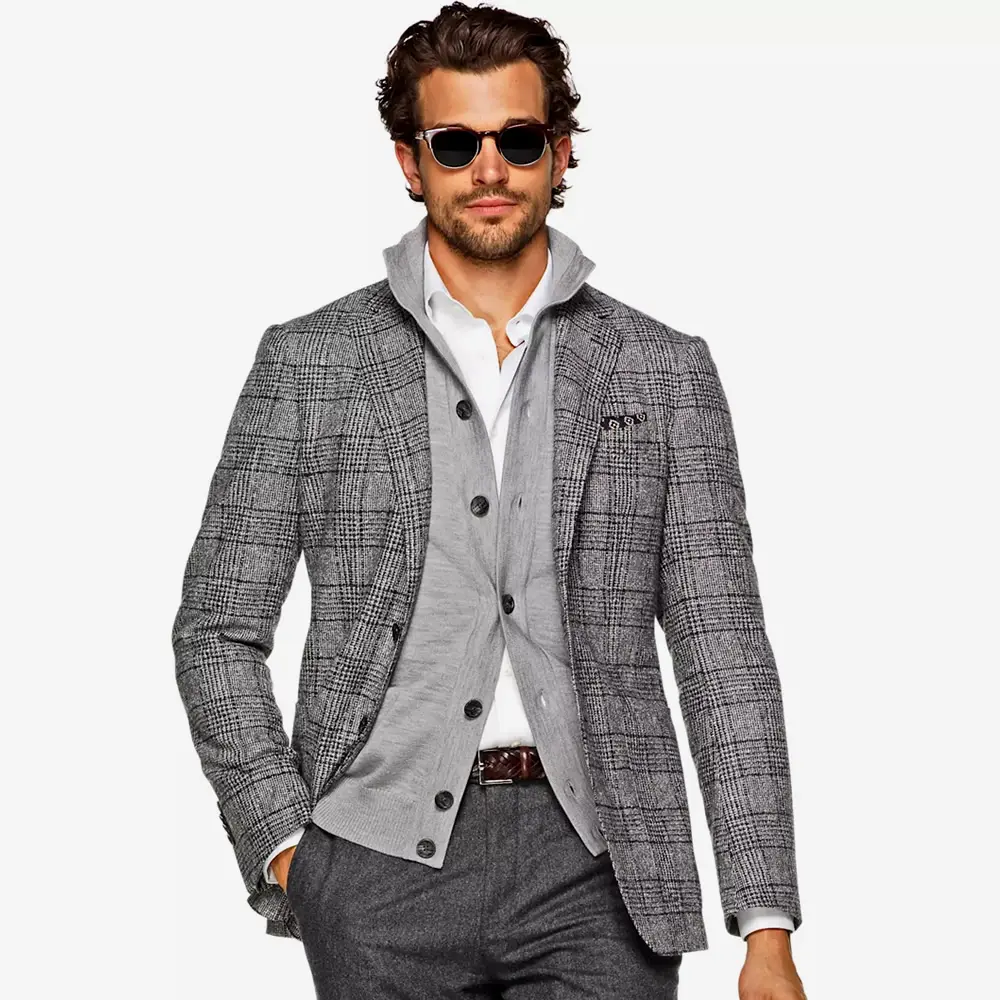
Havana Grey Check Jacket, £329 >
Founded in 2000 by Fokke de Jong, Suitsupply has quickly become a byword for stylish smart casual menswear – a place where the sports jacket sits so naturally.
Despite the Amsterdam brand’s reputation for affordable price points, you won’t be disappointed with the quality – expect premium fabrics sourced direct from some of Italy’s finest mills, and construction on par with leading names in the market.
A variety of modern fits, fabrics, colourways and patterns means you will not be struggling for choice, and with prices starting at just £229 you can afford to build a rotation suitable for multiple occasions.
